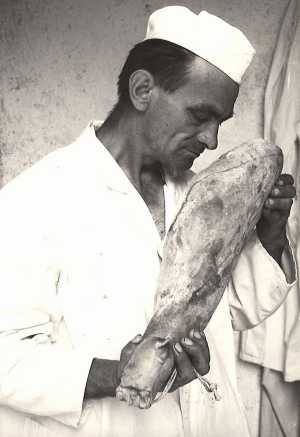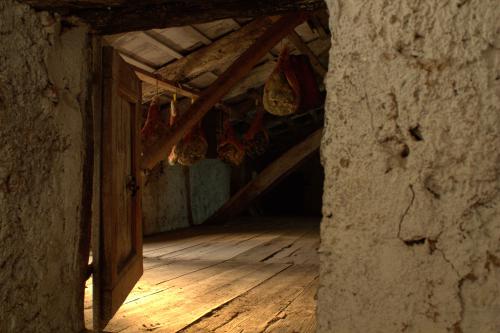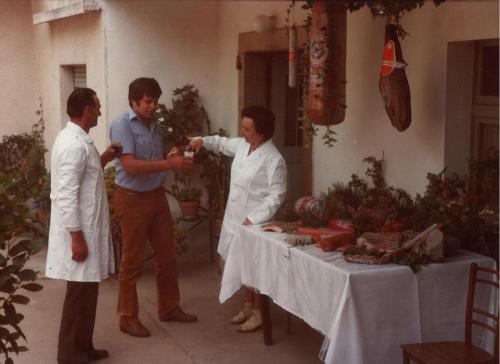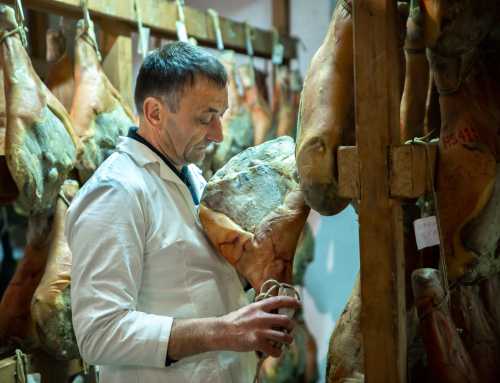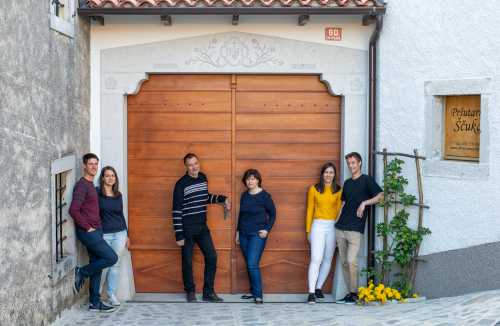The exact start of making prosciutto in Karst region is not known. But without a doubt it is a ancient craft, which was passed on from generation to generation in each familiy. And so it holds true also for Ščuka family. 1801 is the oldest year carved into stone at our estate.
Ščuka family have dried prosciutto and other meat products for centuries. The procedures for preparing excellent dry meat products were passed on from Anton Ščuka (1816) to his son Mihael (1857), who passed them on to his children and most of all to his son Alojz (1889). All the ancestors dried the meat in small quantities for their own use and some for sale to the wealthy people of Trieste.
But the demands for this salty product increased and even overreached the expectations, therefore a new large prosciutto drying facility with a capacity of 10.000 prosciuttos was built in the courtyard. Franc and his wife Pavla also started the first guided tours and tastings in the yard under an ancient umbrella-shaped mulberry tree. Already in the first years of their operation they started drying prosciuttos of forrest animals (bear, deer, wild boar, moos), which were considered to be extremely rare and great specialty.
Ščuka's prosciutteria was built at a time when there were no modern technologies. In the end of the 1980's the demands for prosciuttos went to the sky, so MIP built in Kobjeglava village 2 new facilities with high tech air conditioning systems. In the archives of MIP Nova Gorica, family found the record that Franc Ščuka was the first who prepared a comprehensive technological procedure for preparing the Karst prosciutto. The process was made through his own work in his prosciutteria. The Franc's traditional technological process represented the basis for the preparation of Karst prosciutto for MIP and over the years, with the introduction of modern technologies, it was only upgraded. Franc was only one of many individuals who contributed to the success story of the company MIP Nova Gorica. During the 1970s and 1980s MIP became a synonym for the quality of meat products in the Yugoslavia and later in Slovenia. Franc made an important contribution to this story, since MIP's hams, which received the most prestigious awards at the competitions, were produced right in his prosciutteria.
In 2009 MIP declared bankruptcy. The Ščuka family sought for a successor from other Slovenian prosciutto manufacturers, but found no one that would be keen to dry prosciutto in the classic way. Times have changed, new technologies have come, which made prosciuttos ready in shorter periods of time. Family-owned prosciutteria didn't have those technologies...
In 2018, we acquired the trademark Kraljestvo pršuta, which is protected by the Intellectual Property Office of the Republic of Slovenia. Prior to that, it was owned by the company MIP d.d., which ceased operations in 2009. The purpose of the acquisition was to preserve past stories and breathe new life into them through the offering of premium tourism products that reflect the essence of the Karst region.
Someting new is coming soon...

